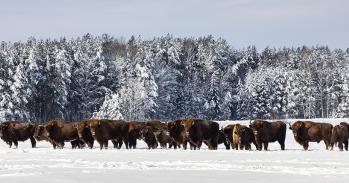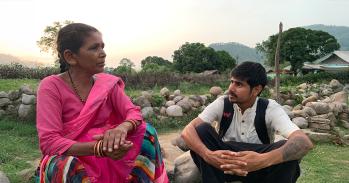
A new book by a Cambridge professor offers an alternative to the narratives of nature’s annihilation, by shining a light on conservation success stories that otherwise get lost in the deluge of dire warnings.
A new book by a Cambridge professor offers an alternative to the narratives of nature’s annihilation, by shining a light on conservation success stories that otherwise get lost in the deluge of dire warnings.
You never motivate anybody by just giving them bad news, you have to give them a reason for thinking that things can improve and that their actions can change what might happen.
Andrew Balmford, Professor of Conservation Science at the Department of Zoology
News about conservation and the environment can be a barrage of bleakness. As biodiversity is lost at an increasingly rapid rate, the gloomy headlines seem to herald the inevitable doom of the natural world. It can feel hopeless at times.
A new book by a Cambridge professor aims to try and address the resignation this causes by exposing some of the success stories from the front line of conservation. While there is no denying that the natural world is in serious trouble, there are plenty of environmental triumphs that simply don’t get reported on.
“You never motivate anybody by just giving them bad news, you have to give them a reason for thinking that things can improve and that their actions can change what might happen,” said the book’s author Andrew Balmford, Professor of Conservation Science at Cambridge’s Department of Zoology.
“When you look around objectively at the conservation landscape it’s true that in most places things are getting worse, but there are actually quite a few places where things have got markedly better - these are stories that don’t get told and really should.”
The book - entitled Wild Hope - is released in the UK today, 8 August, published by University of Chicago Press. Each chapter looks at an environmental victory, the people involved and - crucially - the incentives used to effect real change.
“People need different incentives. Sometimes they’re economic, other times they’re still material but not monetary, and sometimes people just need to be enabled to do the right thing,” said Balmford. “It’s all about human institutions that are turning the tide, and that needs to be celebrated.”
In conservation at the moment, the focus is on making people realise the vital benefits - or ‘eco-system services’ - they get from nature. “This tends to be climate or waterflow regulation, or pollination services - invaluable services that aren’t reflected in the marketplace,” said Balmford.
Examples from the book include a group of farmers from Loma Alta in Ecuador, whose land includes a ‘cloud forest’ on top of a mountain - containing a whole range of species found nowhere else. Conservationists had spent decades trying to persuade these people of the area’s immense biological value, but the forest continued to be cleared for a variety of reasons.
“Then somebody smart discovered that something rather subtle was going on. The forests are high enough to intercept fog that rolls off the Pacific Ocean, turning it into stream flow and feeding the farmers’ fields right through the dry season,” explained Balmford.
“This is a part of the world where rainfall during the dry season is so scarce that people buy and sell water. Some simple science was done with the local community to quantify how much water they were losing, and how much they were set to lose if they carried on the way they’d been going. Within three months the forest was protected.”
“It’s all about seeing something laterally, through other people’s eyes, not seeing it solely as a conservation problem.”
Balmford also touches on conservation in his own ‘backyard’, in particular a campaign he helped orchestrate in the fenland city of Ely, where he lives.
“Ely has a series of abandoned industrial pits on its outskirts which have been reclaimed by nature, and are fantastically valuable for wildlife. A developer bought the land to turn it into a marina, and we successfully campaigned against it.”
“Local people were extremely concerned about the proposal themselves, and we ended up with well over a thousand paid-up supporters. They come along to events we run several times a year. It gets people involved, extending understanding and appreciation of the wildlife on people’s doorstep,” said Balmford.
“It’s so important to learn and celebrate the successes we’ve got. There’s so much more to do, and if we can learn from places where things are getting better then we might improve our hit-rate as well!”
This work is licensed under a Creative Commons Licence. If you use this content on your site please link back to this page.





